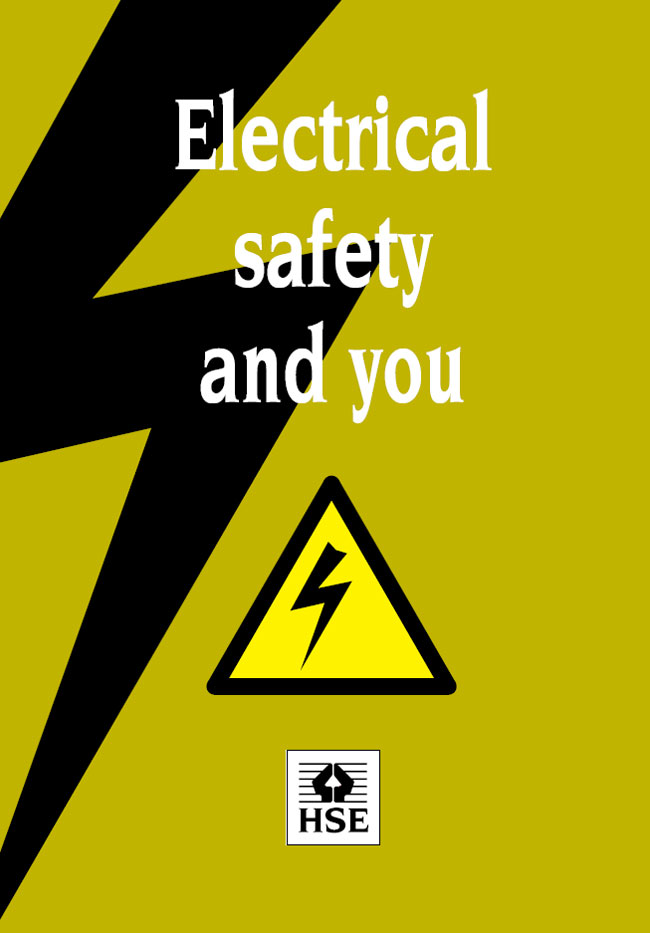 When dealing with electrical devices and electricity, there are some simple precautions you can take so that you may avoid any electrical accidents / electrical hazards. We have previously talked about avoiding the potential electrical hazards, some simple rules for electrical safety at home - tips for electrical safety in the kitchen, using the extension leads and adaptors, electrical safety outdoors, and the RCDs(what is an RCD and what types of RCDs are there). Recently we were reminded of the Simple Precautions recommended by the HSE - to significantly reduce the risk of electrical injuries to you and others around you. HSE also put out a booklet - Electrical Safety and You - which lists the main points we are posting here and in the next article: What are the hazards, assessing the risk, and reducing the risk.
When dealing with electrical devices and electricity, there are some simple precautions you can take so that you may avoid any electrical accidents / electrical hazards. We have previously talked about avoiding the potential electrical hazards, some simple rules for electrical safety at home - tips for electrical safety in the kitchen, using the extension leads and adaptors, electrical safety outdoors, and the RCDs(what is an RCD and what types of RCDs are there). Recently we were reminded of the Simple Precautions recommended by the HSE - to significantly reduce the risk of electrical injuries to you and others around you. HSE also put out a booklet - Electrical Safety and You - which lists the main points we are posting here and in the next article: What are the hazards, assessing the risk, and reducing the risk.
Electrical safety and you
Electricity can kill. Each year about 1000 accidents at work involving electric shock or burns are reported to the Health and Safety Executive (HSE). Around 30 of these are fatal. Most of these fatalities arise from contact with overhead or underground power cables. Even the non-fatal shocks can cause severe and permanent injury. Shocks from faulty equipment may lead to falls from ladders, scaffolds or other work platforms.Those using electricity may not be the only ones at risk: poor electrical installations and faulty electrical appliances can lead to fires which may also cause death or injury to others. Most of these accidents can be avoided by careful planning and straightforward precautions. The below advices outline basic measures to help you control the risks from your use of electricity at work. More detailed guidance for particular industries or subjects is listed in the next article. If in doubt about safety matters or your legal responsibilities, contact your local inspector of health and safety. The telephone number of your local HSE office will be in the phone book under Health and Safety Executive. For premises inspected by local authorities the contact point is likely to be the environmental health department at your local council.
What are the Hazards while dealing with Electricity?
The main hazards while dealing with electricity are:- contact with live parts causing shock and burns (normal mains voltage, 230 volts AC, can kill);
- faults which could cause fires;
- fire or explosion where electricity could be the source of ignition in a potentially flammable or explosive atmosphere, eg in a spray paint booth.
Assessing the Risk of Injuries While Dealing with Electricity
Hazard means anything which can cause harm. Risk is the chance, great or small, that someone will actually be harmed by the hazard. The first stage in controlling risk is to carry out a risk assessment in order to identify what needs to be done. (This is a legal requirement for all risks at work.) When carrying out a risk assessment:- identify the hazards;
- decide who might be harmed, and how;
- evaluate the risks arising from the hazards and decide whether existing precautions are adequate or more should be taken;
- if you have five or more employees, record any significant findings;
- review your assessment from time to time and revise it if necessary.
- in wet surroundings - unsuitable equipment can easily become live and can make its surroundings live;
- out of doors - equipment may not only become wet but may be at greater risk of damage;
- in cramped spaces with a lot of earthed metalwork, such as inside a tank or bin - if an electrical fault developed it could be very difficult to avoid a shock.
Reducing the Risk of Injury from Dealing with Electricity
Once you have completed the risk assessment, you can use your findings to reduce unacceptable risks from the electrical equipment in your place of work. There are many things you can do to achieve this; here are some.- Ensure that the electrical installation is safe;
- Provide safe and suitable equipment;
- Reduce the voltage;
- Provide a safety device;
- Carry out preventative maintenance;
- Work safely(make sure you do some checks);
- Underground power cables;
- Overhead power lines;
- Electrified railways and tramways;




